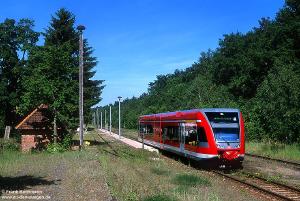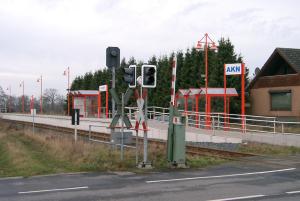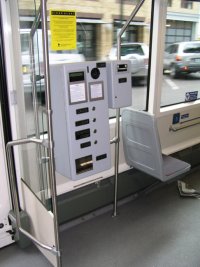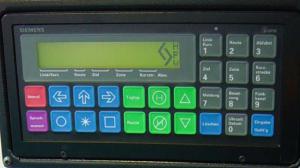These example pages ignore FRA carbody strength regulations against passenger rail. There is no feasible option for Rogue Valley rail transit within these requirements, but a future US government might view passenger rail in a less hostile way.
Implementation examples for Rogue River Rail Transit: The Basics
If lightweight DMUs operate on track, which is built for the weight of freight trains, the infrastructure costs for running one passenger train are the same, or almost the same, as for running 50 passenger trains.
Even with small, cheap DMUs, the investment cost for the rolling stock is 10000 times higher than the cost of one train run in the Rogue Valley.
The basic logic was outlined more than 50 years ago, by the New Haven president Frederick C. Dumaine: Capital should never sit idle, when it could be producing revenue. A small-scale passenger operation becomes affordable by cutting costs per train mile, not by cutting train miles.
Costs per train mile are lowered by
-
One Person Train Operation.
(If there is enough money for a second employee, it should be used for operating smaller vehicles more often.) -
Proof-of-purchase operation without turnstiles or similar maintenance cost generators.
(Operations like the “River LINE” of New Jersey Transit aren't able, to recover the costs of their fare collection system out of ticket revenue. A logical approach tries to keep fraud below a threshold of 2% or similar, using occasional ticket inspections with high fines.) -
A well-designed fare system, which attracts a high percentage of the passengers to season tickets.
(A single ticket vending machine should be enough, even in rush hour. TVMs are an expensive item.) -
High average speed.
(Better speed means less labour cost and capital cost per train mile.) -
Fast turnaround.
(This achieved, a single DMU can operate 600 miles in a single day of Rogue Valley transit operation.) - Fuel consumption of 4 mpg or better.

Without level boarding, implementing a timetable with only a few minutes of turnaround time is no way to run a railroad. If a service is set up under tight budget restrictions, the platform edge of a station is the first item to get built - the rest can come later.
“Fast turnaround” is a risky concept without careful planning. Major delays are unrecoverable, unless the reserve unit is brought into operation with another engineer. The following elements are helpful in avoiding punctuality risks:
-
Level boarding.
(Wheelchair drivers, cyclists, senior citizens require additional padding of the schedule without it.) -
Wide doors and big vestibules.
(Rush hour dwell time has to be kept within tight limits.) -
Magnetic track brake.
(If there is no additional safeguard, slippery rails require, that engineers avoid risk of overshooting at a platform by braking extremely early. A common example is operation on autumn leaves.) -
Well-designed snowplow, and heaters for switches used by passenger rail.
(Central Oregon & Pacific owns a Jordan spreader, but operation in the valley should be possible without running a plow special, at least in a normal winter. The plow of a lightweight DMU needs a more aggressive form than the plow of a heavy loco.)
In the old days, level boarding needed high platforms. Thanks to compact underfloor machinery, it is easily achieved at a medium height today, which mixes much better with freight operation. For implementation of the example timetables, all stations need to feature level boarding.

Fully accessible station, built in the year 2000 for 190 000 $.
For small-scale passenger railroad systems, “station” does not mean the classic depot, once built to Southern Pacific standards all along the Siskiyou Line. While the author has to admit some emotional preference in favour of these, the costs for “real depots” are not supportable by a small-scale passenger service. As an example for the standard, that should be used for such service, the above picture shows the new station of Langeln, a village with 500 inhabitants near Hamburg in Germany. 190 000 $ have bought a level boarding platform, passenger shelter with timetable and network information, ticket vending machine, bicycle shelter, some parking space, lighting, clocks, station signs and loudspeakers connected to the dispatcher. Another two items included in the price: Wheelchair ramp and ceramics-based tactile pavement, fulfilling accessibility requirements. The best passenger shelter in small-scale transit is called on-time performance: Values between 97.5 and 99.5% are achieved by well-run operations.

Ticket vending machine in a streetcar, Portland OR
Even the station in Langeln was built too expensive: The installation of ticket vending machines should be restricted to those places, which generate a considerable number of passengers. For small stations, it is enough to install a TVM in the train. “No TVM” substracts about 30 000 $ from the costs. Another consideration is, that TVMs at remote locations attract a high vandalism risk.

A small button activates a big disappointment for those trying to avoid the fare: "Razzia" stops the operation of ticket vending machine and ticket validators within the train.